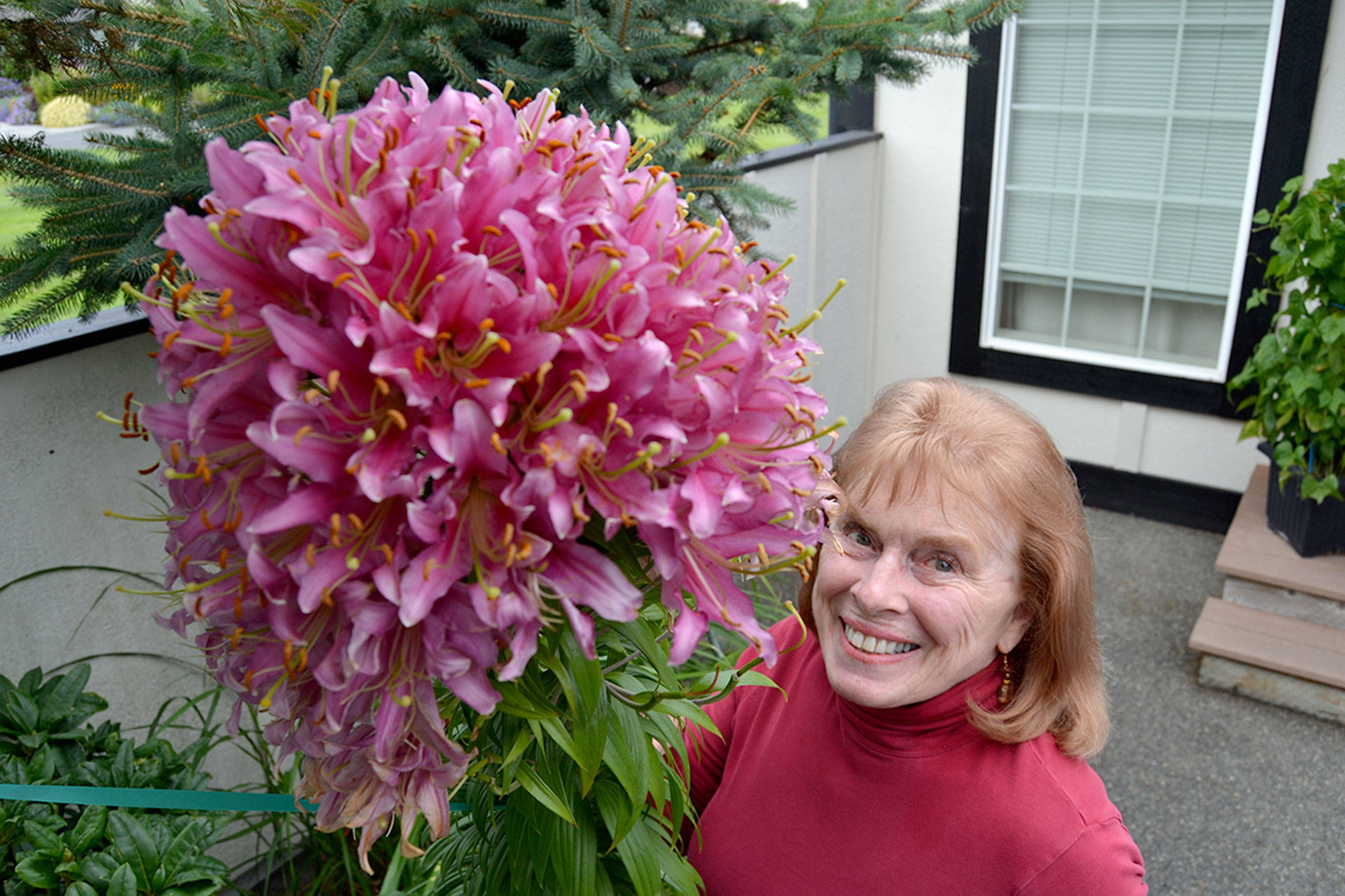One-in-10,000. That’s how rare this lily is in Julie Tarbuck’s backyard.
In recent weeks, Tarbuck, a Sequim stamp collector and hobbyist gardener, has watched her lily grow to more than 6 feet tall and bloom with about 100 flowers.
“I’ve never seen or heard of anything like it,” she said. “It was just a regular bulb last year.”
Members of Clallam County Master Gardeners say what’s occurred with Tarbuck’s lily is a process called “fasciation” where a plant can grow flat, elongated shoots and it also can occur with the root, fruit and/or flower head.
Dianna Gibson, owner of B&D Lilies of Port Townsend, said the lily’s stem “has fasciated as it emerges from the lily bulb (with) the cells multiplying rapidly and causing a flattened stem that produces about four times the regular number of flowers.”
In her business’ blog, http://bdlilies.blogspot.com/, she states that this happens only in about 1 in 10,000 lily bulbs.
“This may happen on a semi-regular basis or only once over the life a bulb, and not every cultivar will do this,” Gibson told the Gazette.
“Growers can go years without seeing it happen in the commercial fields. Theory is that environmental conditions need to be just right for the phenomenon; perhaps the cold, wet spring before our stretch of warm weather triggered it in Sequim, although I’ve seen none affected here this summer.”
Master Gardeners also said fasciation is not contagious and is unpredictable.
Tarbuck, who has non-fasciated lilies in her yard, said she purchased the lily bulbs from Family Farm Market, 3931 Old Olympic Highway, Port Angeles.



